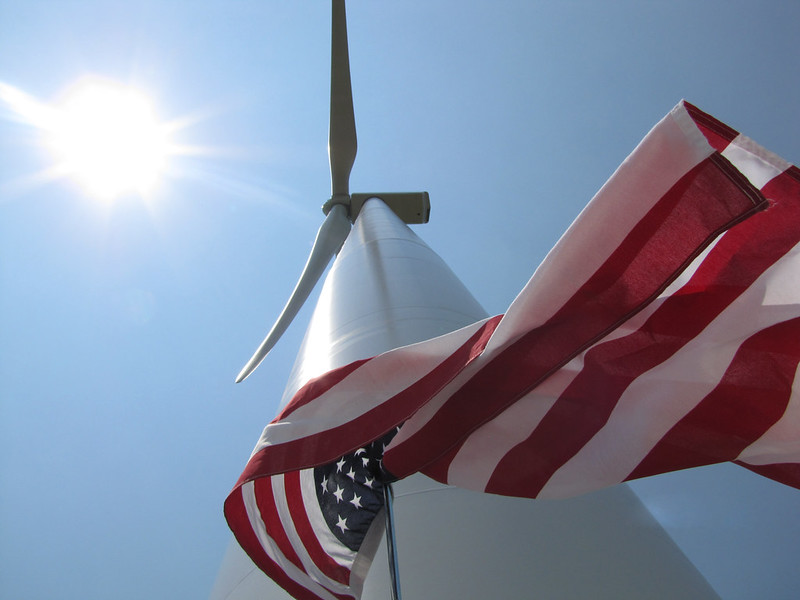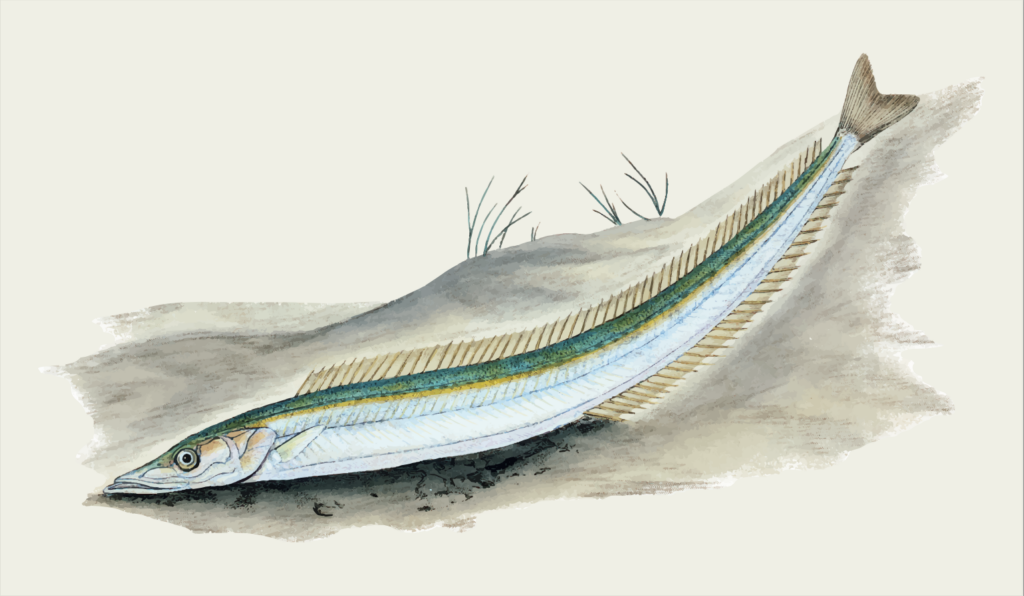
U.S. Department of Agriculture/CC BY 2.0

U.S. Department of Agriculture/CC BY 2.0
As greenhouse gases surge to new heights and marine biodiversity hurtles towards an unprecedented freefall, the urgent call for immediate sustainable solutions reverberates louder than ever. One such development is the Revolution Wind project, a joint venture between Ørsted and Eversource, Danish and New England-based energy companies respectively. The project aims to reduce greenhouse gas emissions and drive economic growth in Rhode Island and Connecticut.
Despite accounting for less than 5% of the world’s population, the United States consumes 17% of the world’s energy, ranking second only to China in terms of energy consumption. This energy releases greenhouse gases, as evidenced by the average 7.4 billion barrels of petroleum used in the U.S. on a single day. Projects such as Revolution Wind are working to combat this dependence on fossil fuels through clean and reliable wind energy.
According the company’s website, the project surrounds the construction of 100 turbines off the coast of Rhode Island, which would provide 400 MW of energy to Rhode Island and 304 MW to Connecticut. According to Ryan Ferguson, Communications Advisor and Public Affairs Lead at Ørsted, Revolution Wind is expected to create 800 direct jobs, and once in operation, will power up to 350,000 Connecticut and Rhode Island homes with clean, renewable energy. This is the equivalent of taking more than 150,000 cars off the road.”
“Revolution Wind will play a critical role in helping Connecticut and Rhode Island meet their ambitious clean energy and climate goals, while creating hundreds of good-paying jobs across New England,” Ferguson said. “With offshore construction beginning in spring 2024, this project is another important step forward for the American offshore wind industry.”
Nicolas Lombardo, a student representative of UConn’s carbon reduction group, sees Connecticut’s embrace of renewable energy as a significant stride in the right direction. From crowdfunding initiatives aimed at sustainability to comprehensive action plans and tangible sustainable practices, the state is making commendable progress.
“Greenhouse gases, like carbon dioxide, are released into the atmosphere with the burning of fossil fuels, and this in turn is trapping heat and increasing the temperature of the planet,” Lombardo said. “Renewables use natural and replenishable resources like the sun and wind, and they are a necessity if the world wants to slow the worst impacts of the climate crisis.”
In December 2018, Connecticut proactively advanced the Revolution Wind project by preemptively buying 200MW through a long-term power purchase agreement, authorized by the Public Utilities Regulatory Authority (PURA), with Eversource and United Illuminating. Additionally, the state’s Department of Energy and Environmental Protection (DEEP) provided project developers the green light to initiate negotiations for an extra 100MW power purchase agreement with the region’s power distribution firms.
The Revolution Wind project is just the first step in Connecticut’s ambitious agenda to have 100 percent of the state’s electricity sourced from zero-carbon resources by 2040. Governor Ned Lamon recently expressed enthusiasm for collaborating with neighboring states, Massachusetts, and Rhode Island, to continue working towards a more sustainable and economically successful future.
“We’re going to be purchasing wind power together, bringing down costs, allowing us to get more economies going forward,” Governor Lamont said during a zero-carbon press conference. “That will be a significant piece of our energy future.”
Despite the considerable potential benefits that the Revolution Wind project promises, concerns have been raised regarding the potential impact on marine life.
Hannes Baumann, Ph.D., associate professor of marine sciences at the University of Connecticut, specializes in anthropogenic changes in our oceans and coastal waters. He, like other scientists and environmental activists, fears that human construction in marine habitat may pose risks to marine life. According to Baumann, the turbines pose special risk to the sand lance, an eel-like fish that relies on the same coarse grain sand habitats that are ideal for turbine construction.

“We used a computer model to simulate where the sand lance settles, and it was found that they drift to areas being constructed for wind farms,” Baumann said. “The study found that there is a potential overlap concern between the offshore wind park and these very important fish which are a crucial food source for marine life.”
Baumann also addressed concerns regarding both the impact on migratory birds and the high voltage cables on the ocean floor and the impact that could have on the orientation of organisms that use magnetic fields. While he does support the push for renewable energy, Baumann is concerned that there may not be enough research being done.
Kim Sawicki, president of Sustainable Seas Technology, is also concerned about the environmental impacts, but her priority is aiding those whose voices often go unheard.
“The wind farm is going to displace fish for sure, but I think those fish will be fine,” Sawicki said. “My concern is with the local fisherman. This is their livelihood, and it is at risk since the turbines are being built in their leading fishing areas they have utilized for decades.”
While Ørsted and Eversource state that they are aware of the environmental impacts Revolution Wind could create, both organizations assure that they have taken the necessary measures to mitigate any negative consequences the wind farm may have.
Jennifer Delony, regional director of offshore wind at the Environmental League of Massachusetts, said there is a very lengthy and legal process when it comes to the construction of wind farms.
“I cannot stress enough the amount of time, energy, and people that have gone into ensuring that there are no severe impacts on local marine life,” Delony said. If it was not a low-incident issue, the project would never have been approved. Any impacts that were identified are constantly under surveillance by experts in the marine biology field.”
Sam Salustro, vice president of strategic commutations at the Business Network for Offshore Wind, believes that the backlash towards Revolution Wind largely stems not from marine conservationists, but rather from people who are against the concept of wind farms entirely.
“Anything that happens in the ocean is going to impact marine life in some way, but Revolution Wind Farm is not going to have a dangerous or severe impact on marine mammal life,” Salustro said. “This is what a concentrated misinformation campaign looks like and it is driving confusion and doubt about offshore wind’s environmental record.”
As Connecticut looks towards a clean energy future, the Revolution Wind project represents a significant step forward in achieving this goal. Despite Ørsted and Eversource’s efforts to ensure that the Revolution Wind project is constructed with marine biodiversity as a top priority, there are still concerns about the impact this project could have on local marine life and the jobs that depend on those potentially displaced fish.
According to Ferguson, Revolution Wind and the safety of marine life are not on opposite ends of a spectrum, but rather are intrinsically connected by a greater threat.
“The biggest threat to the ocean environment is the adverse effects of warming oceans and climate change,” Ferguson said. “Revolution Wind is a critical piece of the fight against climate change and mitigating those harmful impacts.”